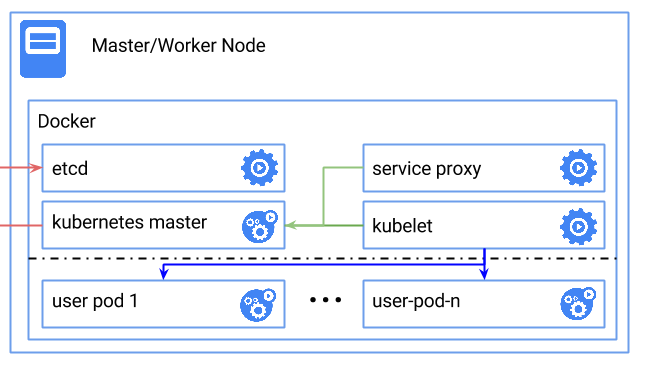

This command shows all nodes that can be used to host our applications. To view the nodes in the cluster, run the kubectl get nodes command: $ kubectl get nodes During this tutorial, we’ll be focusing on the command line for deploying and exploring our application. The Kubernetes dashboard allows you to view your applications in a UI. Using minikube, we have a running master and a dashboard.
Nodes, who are the workers that run applications. The Master, which coordinates the cluster. Kubernetes automates the distribution and scheduling of application containers across a cluster in a more efficient way.Ī Kubernetes cluster consists of two types of resources: Containerized applications are more flexible and available than in past deployment models, where applications were installed directly onto specific machines as packages deeply integrated into the host. To make use of this new model of deployment, applications need to be packaged in a way that decouples them from individual hosts: they need to be containerized. The abstractions in Kubernetes allow you to deploy containerized applications to a cluster without tying them specifically to individual machines. Kubernetes coordinates a highly available cluster of computers that are connected to work as a single unit. You can then type $ kubectl cluster-info to get some detailed output about your cluster. “Starting local Kubernetes cluster…Kubectl is now configured to use the cluster.” You should see output along the lines of: #STARTING IWTH DOCKER AND KUBERNETES INSTALL#
Install Minikube and start it: $ curl -Lo minikube & chmod +x minikube & sudo mv minikube /usr/local/bin/ You can install kubectl with these steps. Minikube currently supports any version of kubectl greater than 1.0, but we recommend using the most recent version. xhyve driver, VirtualBox or VMware Fusion installation.Enabling CNI (Container Network Interface).
 Minikube supports Kubernetes features such as:. Minikube packages and configures a Linux VM, the container runtime, and all Kubernetes components, optimised for local development. Minikube runs a single-node Kubernetes cluster inside a VM on your laptop for users looking to try out Kubernetes or develop with it day-to-day. Minikube is a tool that makes it easy to run Kubernetes locally. We’re going to use a lightweight tool called Minikube to experiment with a Kubernetes cluster. So, let’s get to know Kubernetes at the command line the best place to actually learn a new technology. Specifically, we’ll install the Kubernetes tools to interact with the cluster and deploy a containerized application on a cluster. This blog post will show you the basics of the Kubernetes cluster orchestration system. Kubernetes is hosted by the Cloud Native Computing Foundation ( CNCF) and builds upon a decade and a half of experience at Google running production workloads at scale using a system called Borg, combined with best-of-breed ideas and practices from the community. Kubernetes (pronounced koo-ber-net-ees) is an open source system for managing containerized applications across multiple hosts, providing basic mechanisms for deployment, maintenance, and scaling of applications.
Minikube supports Kubernetes features such as:. Minikube packages and configures a Linux VM, the container runtime, and all Kubernetes components, optimised for local development. Minikube runs a single-node Kubernetes cluster inside a VM on your laptop for users looking to try out Kubernetes or develop with it day-to-day. Minikube is a tool that makes it easy to run Kubernetes locally. We’re going to use a lightweight tool called Minikube to experiment with a Kubernetes cluster. So, let’s get to know Kubernetes at the command line the best place to actually learn a new technology. Specifically, we’ll install the Kubernetes tools to interact with the cluster and deploy a containerized application on a cluster. This blog post will show you the basics of the Kubernetes cluster orchestration system. Kubernetes is hosted by the Cloud Native Computing Foundation ( CNCF) and builds upon a decade and a half of experience at Google running production workloads at scale using a system called Borg, combined with best-of-breed ideas and practices from the community. Kubernetes (pronounced koo-ber-net-ees) is an open source system for managing containerized applications across multiple hosts, providing basic mechanisms for deployment, maintenance, and scaling of applications. 
Kubernetes is one of the most battle-hardened and team-empowering tools for managing containerised applications and services in a redundant and persistent HA configuration with cloud-native scaling and failover capabilities built in. The queries we usually receive are around managing such clusters in a highly regulated, often governmentally compliant environments, while still allowing people to leverage their technologies instead of being beholden to them. As I’ve started to work with clients in the Asia-Pacific region, I’m extremely encouraged to find clients actively engaged in DevOps transformations with Dockerized applications at the core. It’s so consistently performant that Red Hat decided to build their OpenShift PaaS on top of enterprise-hardened Kubernetes releases.Īs you may have heard, Levvel recently expanded into the Asia-Pacific region, and I’ve moved to Sydney to help lead the expansion in the role of Vice President of Technology.

One of the most promising CaaS (Container as a Service) solutions comes to us from Google and is completely open-source. Docker containers are changing the landscape of how we think about building, shipping, and running applications in modern computing.








 0 kommentar(er)
0 kommentar(er)
